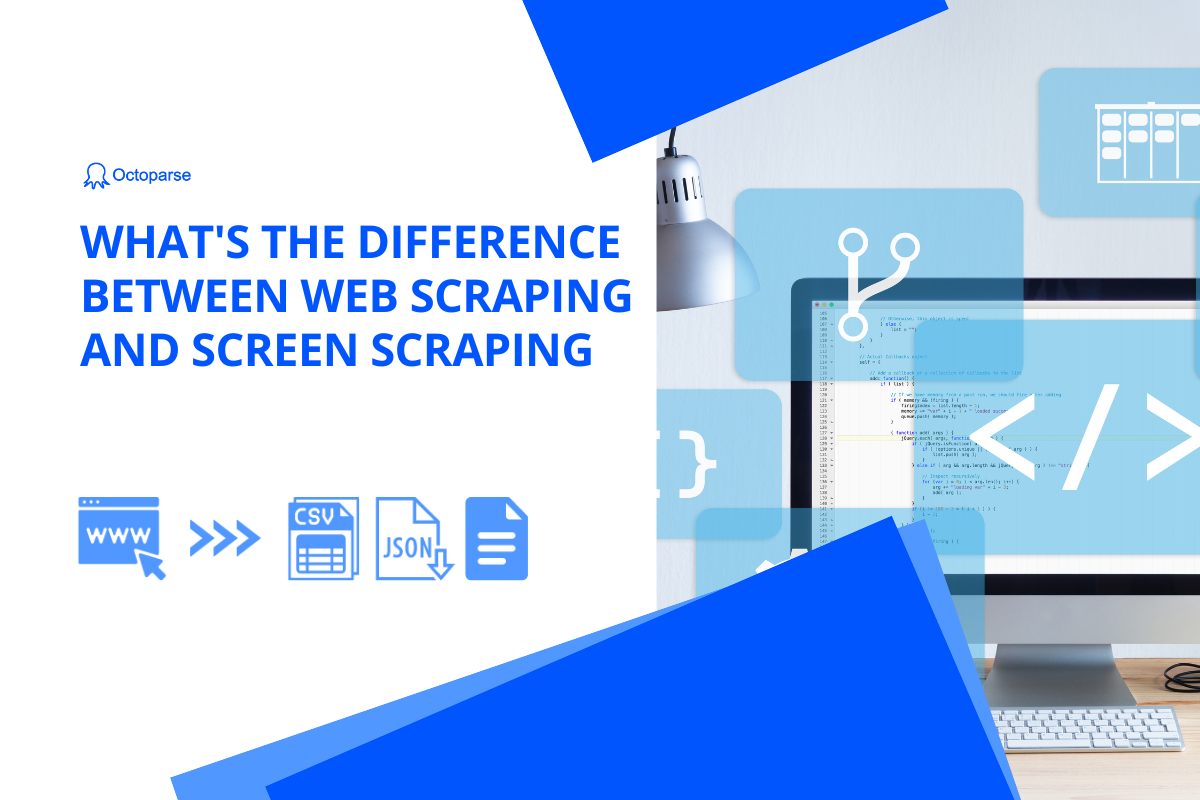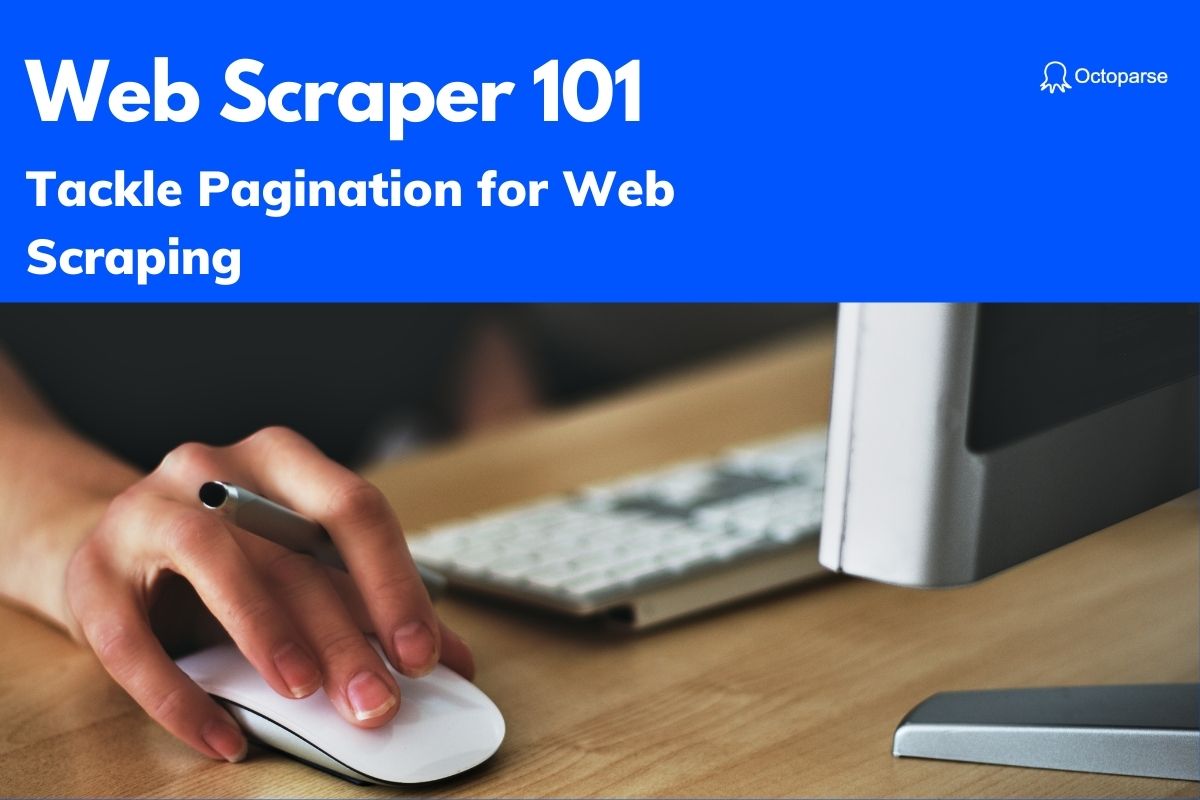Web scraping surely brings advantages to us. It is speedy, cost-effective, and can collect data from websites with an accuracy of over 90%. It frees you from endless copy-and-paste into messy layout documents.
However, something may be overlooked. There are some limitations and even risks lurking behind web scraping. Reading the following parts to know web scraping limitations and how to scrape data without getting blocked.
What is Web Scraping and What Can Web Scraping Do
For those who are not familiar with web scraping, let me explain. Web scraping is a technique used to extract information from websites at a rapid speed. The data scraped down and saved to the local will be accessible anytime. It works as one of the first steps in data analysis, data visualization, and data mining as it collects data from many sources. Getting data prepared is the prerequisite for further visualization or analysis. That’s obvious. But How can we start web scraping?
Which is the Best Way to Scrape Data?
There are some common techniques to scrape data from web pages, which all come with some limitations. You can either build your own crawler using programming languages, outsource your web scraping projects, or use a web scraping tool. Without a specific context, there is no such thing as “the best way to scrape.” Think of your basic knowledge of coding, how much time is disposable, and your financial budget, you will have your own pick.
If you are an experienced coder and you are confident with your coding skills, you can definitely scrape data by yourself. However, since each website needs a crawler, you will have to build a bunch of crawlers for different sites. This can be time-consuming. You should be equipped with sufficient programming knowledge for crawlers’ maintenance. Think about that.
If you own a company with a big budget craving for accurate data, the story would be different. Forget about programming. Just hire a group of engineers or outsource your web scraping project to professionals.
Speaking of outsourcing, you may find some online freelancers offering these data collection services. The unit price looks quite affordable. However, if you calculate carefully the number of sites and loads of items you are planning to get, the amount may grow exponentially. Statistics show that to scrape 6000 products’ information from Amazon, the quotes from web scraping companies average around $250 for the initial setup and $177 for monthly maintenance.
Related Reading: How Much Does Web Scraping Cost?
If you are a small business owner or simply a non-coder in need of data, the best choice is to choose a proper scraping tool that suits your needs. As a quick reference, you can check out this list of the top 30 web scraping software. Most tools on this list are designed for anyone regardless of coding skills.
The Limitations of Web Scraping Tools
There is always a learning curve
Even the easiest web scraping tool takes time to master, some non-coder-friendly tools may take people weeks to learn. Some tools, like Apify, still require coding knowledge. Scraping website data successfully and accurately requires knowledge of XPath, HTML, AJAX, etc. So far, the most effortless way to scrape web data is to use preset web scraping templates which allow users to extract data within clicks.
The website structures change frequently
Scraped data is arranged according to the structure of the websites. Sometimes you might revisit a site and find the layout changed. That’s because some website developers and designers constantly update the websites for better UI, and faster loading speed, even for anti-scraping. Changes may be as minor as relocating a button, or as drastic as redesigning the entire page. Even a minor change can mess up the data you extract with the previous scraper, as the scrapers are built according to the old site. To address such problems, you need to adjust your crawlers every few weeks to get the correct and up-to-date data.
It is not easy to handle complex websites
Here comes another tricky technical challenge. If you look at web scraping in general, 50% of websites are easy to scrape, 30% are moderate, and the last 20% are rather tough to pull data from. Some scraping tools are designed for simple websites that apply numbered navigation. Yet nowadays, more websites are starting to include dynamic elements such as AJAX. Big platforms like Twitter apply infinite scrolling to their sites, and some need users to click the “load more” button to keep loading the content. Due to the complex features of websites, users need a more functional scraping tool.
To extract data on a large scale is way harder
Pieces of information on any website can be countless, while some tools are not able to extract millions of records, as they can only handle small-scale data scraping. This gives headaches to e-commerce business owners who need millions of lines of regular data feeds straight into their database. Cloud-based scrapers like Octoparse and Web Scraper perform well in terms of large-scale data extraction. While tasks run on multiple cloud servers all around the clock, you can get rapid speed and gigantic space for data retention.
A web scraping tool is not omnipotent
What kinds of data can be extracted? Mainly texts and URLs.
Advanced tools can extract texts from source code (inner & outer HTML) and use regular expressions to reformat it. For images, one can only scrape their URLs and convert them URLs into images later. If you are curious about how to scrape image URLs and bulk download them, you can have a look at How to Build an Image Crawler Without Coding.
What’s more, it is essential to note that most web scrapers cannot crawl PDFs, as they parse through HTML elements to extract the data. You need other tools like Smallpdf and PDFelements to scrape data from PDFs.
Your IP may get banned by the target website
CAPTCHA annoys. Does it ever happen to you that you need to get past a CAPTCHA when scraping a website? Be careful, that could be a sign of IP detection. Scraping a website extensively brings heavy traffic, which may overload a web server and cause economic loss to the site owner. So website owners might apply diverse techniques to anti-web scraping. While extracting data, there are also many tricks to avoid getting blocked. For example, you can set up your tool to simulate the normal browsing behavior of a human to solve CAPTCHA or use IP proxies to bypass website blockades.
There are even some legal issues involved
Is web scraping legal? A simple “yes” or “no” may not cover the whole issue. Let’s just say…… it depends. If you are scraping public data for academic uses, you should be fine. But if you scrape private information from sites clearly stating any automated scraping is disallowed, you may get yourself into trouble. For instance, LinkedIn is among those who clearly state that “we don’t welcome scrapers here” in their robots.txt file/terms and service (ToS). So you need to mind your act while scraping data.
Closing Thoughts
In a nutshell, there are many limitations in web scraping. If you want data from websites tricky to scrape from, such as Amazon, Twitter, and LinkedIn, you will need help from web scraping tools to build scrapers that meet your needs. Or you can turn to a company that provides data services like Octoparse.
A data service provider offers customized services according to your needs. Getting your data ready, relieves you from the stress of building and maintaining your crawlers. No matter which industry you are in, eCommerce, social media, journalism, finance, or consulting, if you are in need of data, feel free to contact us, anytime.




